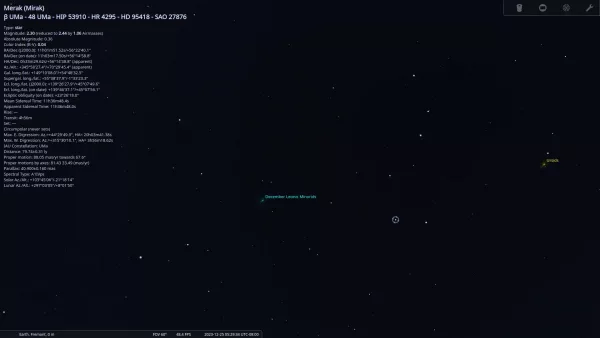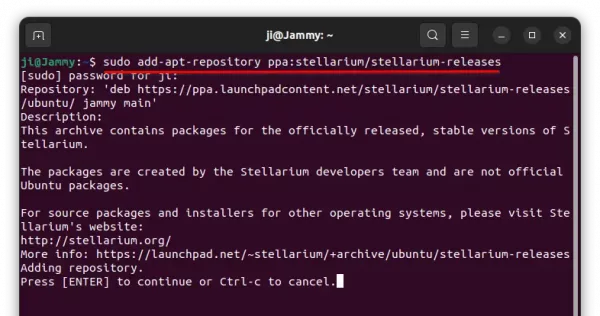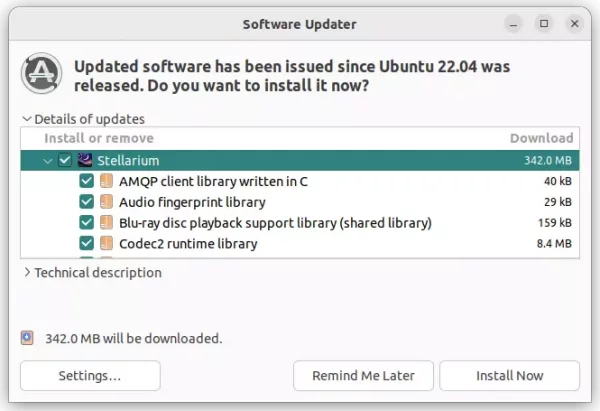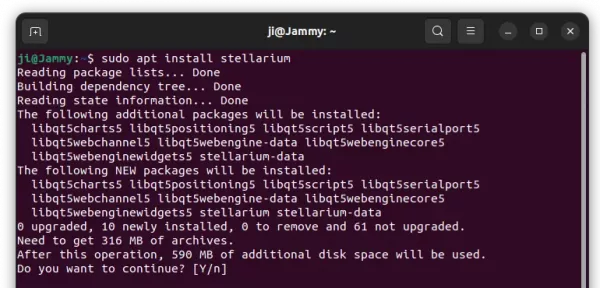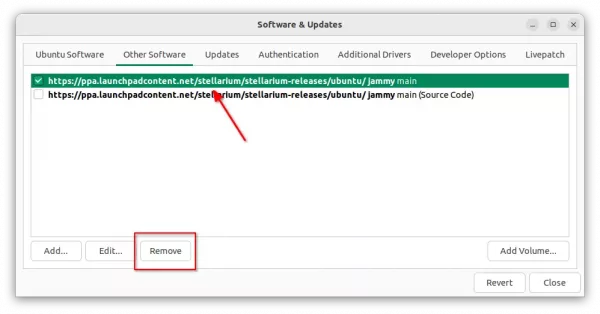Stellarium, the free open-source planetarium software, announced new 23.4 release few days ago.
The new release added experimental support for new plugin: Lens Distortion Estimator, and new sky culture: Tibetan Lunar Mansions.
With new release, user can now change the look of GUI through normalStyle.css config file. For Windows, it added new MESA for Windows packages, and package for ARM64 CPU architecture type.
Other changes include:
- Support the origins of nomenclature names
- Performance improvements on macOS with ARM64
- Add script “Jupiter Moons”
- Add filter, based on SATCAT Operational Status in Satellites plugin
- Add AppImage package based on Qt6.
- more simple calendar-based time steps (esp. for RemoteControl)
- wrapper for too long star names
- Temporary workaround for overlapping indicator and text in lists
- Optional sorting rule for Search Tool
- Text wrapper for pulsar notes, Modern (H.A. Rey) SC, and long origins of nomenclature names
- Ability to make observing lists directory configurable via GUI
- Add dpiAwareness option to manifest and send physical viewport size to Spout
- Add DSO names
- Add 2 new time steps for AstroCalc/Ephemeris tool
- Remote control command to change window size
- And various bug-fixes. See release note for details.
How to Install Stellarium 23.4
The software provides official packages for Linux, Windows, MacOS, as well as source code, available to download at Github release page:
Ubuntu user can search for and install Stellarium from either Ubuntu Software or App Center (for 23.10), though it’s Snap package runs in sandbox.
For Ubuntu & Linux Mint users who prefer the classic .deb package, the official PPA has built the package for Ubuntu 20.04, Ubuntu 22.04, Ubuntu 23.04, and Ubuntu 23.10.
1. First, press Ctrl+Alt+T on keyboard to open terminal. When it opens, run command to add the PPA:
sudo add-apt-repository ppa:stellarium/stellarium-releases
Type user password (no asterisk feedback) when it asks and hit Enter to continue.
2. Linux Mint users need to manually refresh the package cache after adding PPA:
sudo apt update
3 Finally either update Stellarium using Software Updater (Update Manager) if an old version was installed.
Or, run command in terminal to install it for the first time.
sudo apt install stellarium
Uninstall
To remove the planetarium software software, simply open terminal and run command:
sudo apt install --autoremove stellarium
And, remove the Ubuntu PPA either by running command:
sudo add-apt-repository --remove ppa:stellarium/stellarium-releases
or use “Software & Updates” to remove source line under ‘Other Software’ tab.




